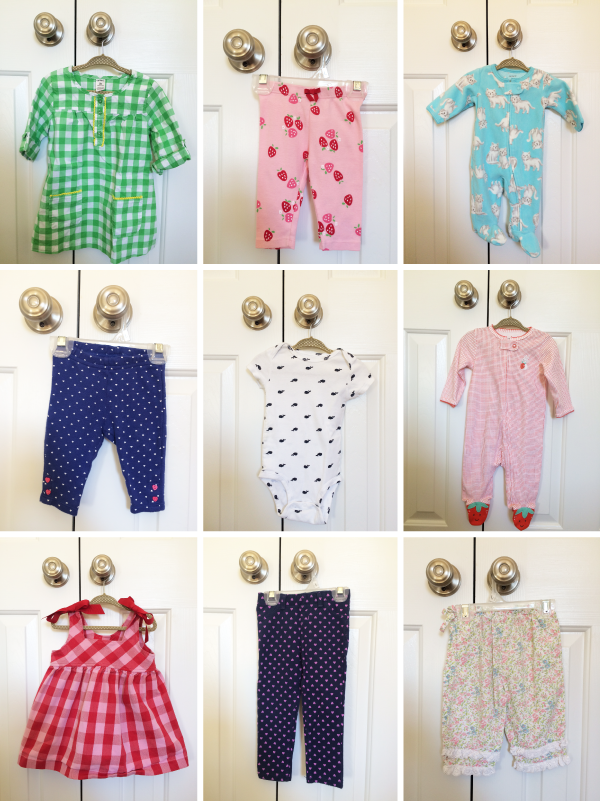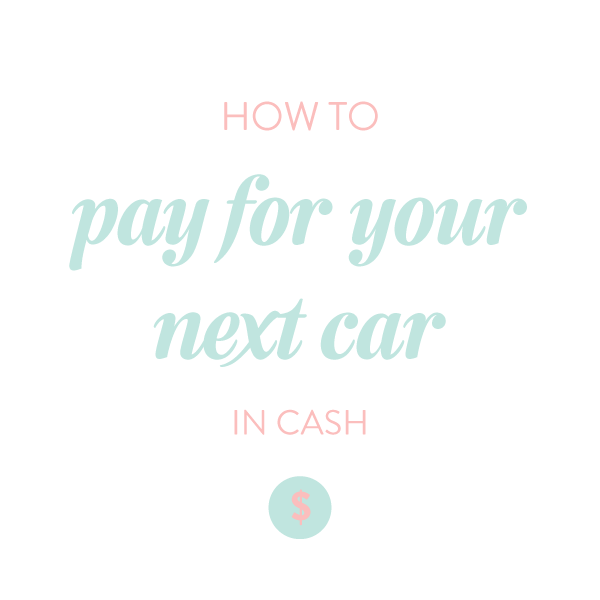3 December 2015
When you follow a budget, it’s safe to say that you’re always on the hunt for ways to reduce your costs (and thus free up money for the budget categories that you’d like a little extra wiggle room in!). We recently chatted about shopping consignment sales, and today I’m sharing another way our family has recently maximized our budget!
Up until a few months ago, we had a cable and internet package from Time Warner Cable. We got the fewest possible channels (your standard NBC, ABC, etc.) for the lowest possible amount ($22). While this was fine, we were sad to miss out on a few favorites: namely AMC (The Walking Dead!), ESPN (Duke basketball!), and HGTV (Fixer Upper!). But, we weren’t willing to pay any more money to get them.
THEN. One of John’s colleagues told him about Sling TV, and the angels sang. Have you heard of it? After doing our own research, we canceled cable (though kept the internet!), signed up with Sling, and haven’t looked back.

Sling dubs itself “the best of live TV for $20 a month.” With an account, you can watch TV over the internet anytime, anywhere, on your television, tablet, phone, or computer. (You also sign up online and can cancel online at any time!) Our $20 a month package includes all of the favorites listed above, but if you want even more variety, they do have add-on packages for HBO, kids, and more sports. We also received a Roku streaming stick for pre-paying three months, which means we can now watch Netflix on our television, too!! (We always watched it on our laptop before!)
The channels that Sling does not provide? Local broadcast ones like ABC, NBC, and CBS. To bridge that gap, we installed an antenna (this one – boy, have they come a long way in recent years!).
Even though we’re really only saving $2 per month, I consider this a major budget win, as we’re getting more WHILE paying less money. Hooray!! We’ve been singing the Mohu and Sling praises to anyone who will listen for the last few months, but I did want to mention a few potential downsides if you’re considering making a similar move:
— Our antenna generally works perfectly. We did have an issue with spotty reception one night during a bad rainstorm, but it hasn’t happened since we moved the antenna further up our wall.
— Depending on where you live and how close you are to broadcast signals, the Mohu antenna might not be an option for you. (For example, my parents would have to get one with a much longer receiving distance, if they could make it work at all.) You can check your location compared to the signals here.
And that’s it! Have I convinced you?? Honestly, the worst part is calling to cancel your cable, because they WILL put the hard sell on you — but just keep saying “no thank you” :)
23 November 2015
We are in a really good place with clothes for our girl. In addition to generous piles of loaners from three sisters and a friend, we have a tub of hand-me-downs from a cousin and lots of goodies from showers. But, the clothing source that I’m most excited about and with the best long-term potential is… kids consignment sales! I’ve found some amazing pieces over the last few years but know they can be intimidating, so I thought I’d share a few tips for shopping them today!

1. Opt for church consignment sales. I may be biased, because I’ve actually only shopped at sales run by churches, but I’ve found them to be uniformly well-organized, well-run, friendly, and with high quality clothing. It’s easy to find them by Googling your town + “kids consignment sale.” If you’re in the Triangle, I love my church’s sale (which runs twice a year) as well as the Hayes-Barton sale (also twice a year). If you find a sale you like, watch out for a flyer for their next dates when you check out!
2. Go on the first day, and go early. Many consignment sales run for several days, and some mark everything down by 50% on the second day. However, I’d much rather have first pick at the goods than spend a little less money, especially because everything is already so inexpensive! Also, I’d recommend showing up at least a half hour before the sale begins — the ones I frequent always have a line waiting to get in, and again, your goal is to get first crack at things.
3. If it’s an option, volunteer. Related to point number two, if you REALLY want to get a jump on things, your best chance is by volunteering! At least at my church, if you volunteer to process clothes on the drop-off days, you have the option to buy anything you like as soon as it comes in. I’ve gotten my best pieces this way! If volunteering is not an option but you’re able to consign, that might get you access to a preview sale before the general sale.
4. Don’t just shop your current size. For the last few years, I’ve been scanning the newborn to 3T racks (even though for many of those years I wasn’t even pregnant!). Especially when your kids are younger and don’t have opinions about their clothing, it’s a great idea to stockpile pieces you love as long as you have the storage space.
5. Pull, then cull. Sales can get a little crazy, so I like to pull anything that catches my eye on an initial cruise around the floor, then find a quiet corner to sort through my armful. Usually, I’ll put back at least 3/4 of what I initially pulled, if not more. (And on that note, be polite and either re-hang your discards or hand them off to a volunteer.) If you know you’ll be a super shopper, consider bringing your own bag (like an Ikea reusable bag or a Boat and Tote) to make it easier to carry things.
6. Be picky. I, and I assume most of y’all, have the luxury of not needing to buy all of my girl’s clothing from a consignment sale. So, I’m very picky about what I buy, even though the price point is so low. I only buy things I absolutely love, and only if they’re in great shape. Sometimes I’ll leave with ten items, but sometimes with just one piece! It’s definitely quality-over-quantity for me with these sales.
Most of my experience has been in local sales, but I have started to dabble in Instagram sales, as well, so wanted to give them a brief mention! I haven’t actually bought anything as I’ve always been outbid (!), but the accounts I have my eye on are @kksisters_closet and @modernminiresale. My best tip here is to look for accounts whose style you like and whose kids are a bit older than yours!
What do y’all think? Have you shopped at consignment sales or Instagram sales for your kids? Any tips you’d add? Or, my Triangle peeps, any other sales I should know about? :)
P.S. All of the pieces above are favorites I’ve purchased from local sales! The most expensive (the green plaid and red plaid) were $4, and almost everything else was $1!!
25 August 2015
Friends, thank you so much for sharing your thoughts on my last post!! It meant so much to me, and I loved reading all of your comments. I will be back with more about how we shared the news with our families soon, but first I wanted to turn to a different subject: our car fund! I mentioned it briefly in last year’s big paying off debt post, but since it has been our biggest financial goal for 2015, I figured it was time to write about it!

In my debt post, I mentioned that we were planning to pay off our two car loans in mid-2014. We did (hooray!). For a little back story, we purchased both of our cars in 2011. Both of the loans were about the same – about $250 each per month at about 2.5% interest. Though I generally try to avoid debt whenever possible, I am grateful that loans exist and that we were able to get them to help us secure reliable cars.
After tackling our other financial goals throughout our first few years on our own (I talk about them more here, but they went in the general order of emergency fund –> wedding –> house down payment –> student loans), it was pretty quick work to finish off our car loans. And even though, as I said, I am so grateful that car loans exist and that we were able to get them the first time around, John and I are committed to never taking one out again. We believe this is possible, and I believe the same is totally within your reach, too!!
Establishing a car fund is what I would call a “second level” financial goal. Since it’s a saving goal rather than a paying off debt goal, it only makes sense to tackle it after you’ve paid off any credit card or educational debt, and obviously after you’ve paid off any car loans. The mechanism is simple: as soon as you’re done paying off your car, you begin putting the exact same amount of money as your payment (or more!) into your own account. Continue doing this until you’ve amassed the amount you plan to spend to replace your vehicle.
Here are a few other questions you might have if you’d like to do this yourself:
How much money should I save each month? As I noted above, the easiest way to transition into this is to simply transfer the same amount you were paying on your loan (if you had one) into your own account. However, depending on how soon you’d like to replace your car, how nice of a car you’re planning to get the next time around, and how risky you’d like to be with your investment (more on that below), you may want to beef up that amount. Right now, we are contributing $1,000/month to our car fund.
What sort of account should I use? A simple savings account, like you’d get at your local bank or credit union, is definitely an option. If you’re not looking to purchase for 3+ years, you might look into opening an investment account through a low-cost brokerage firm like Fidelity, Scottrade, or Charles Schwab. This exposes you to more risk but gives you the potential for a higher return via additional investment options. Whatever type you choose, I’d recommend stashing the money in an account that’s separate from everything else – general savings, emergency fund, etc. – so that the purpose is clear and you’re not tempted to touch it.
What should I invest the money in? I am NOT a financial advisor, so I’m definitely not going to advise you on this! It’s all about deciding how comfortable you are with risk and choosing accordingly. It’s also important to think about your time horizon – it might not make the most sense to invest money you’d like to use in five years entirely in stocks. Asset allocation mutual funds might be a good vehicle to look into because they have pre-assembled stock and bond mixes from which to choose.
The beauty of this system is that even though your budget looks the same despite paying off your loan – the same amount is still going out every month – you’re now paying yourself, and EARNING interest instead of PAYING interest! A much better arrangement! And how good will it feel to walk into a car dealership one day and pay cash for your chosen vehicle? I can’t WAIT!
Friends, I would love to hear: how long have you had your car, or how long do you plan to keep it? We’re planning for our two to last for at least ten years, but mine is on year nine and still going strong, so I have high hopes we’ll be able to keep it for longer!
23 April 2015
I’ve been working on a longer post for the past few days (hopefully ready for tomorrow!), but in the meantime, I wanted to share this quote. I’ve been reading Money: Master the Game by Tony Robbins, and I appreciate his emphasis on giving and cultivating a mindset of generosity alongside saving and asset allocation. This particular passage really resonated with me:

Hope you all are having a great day!























